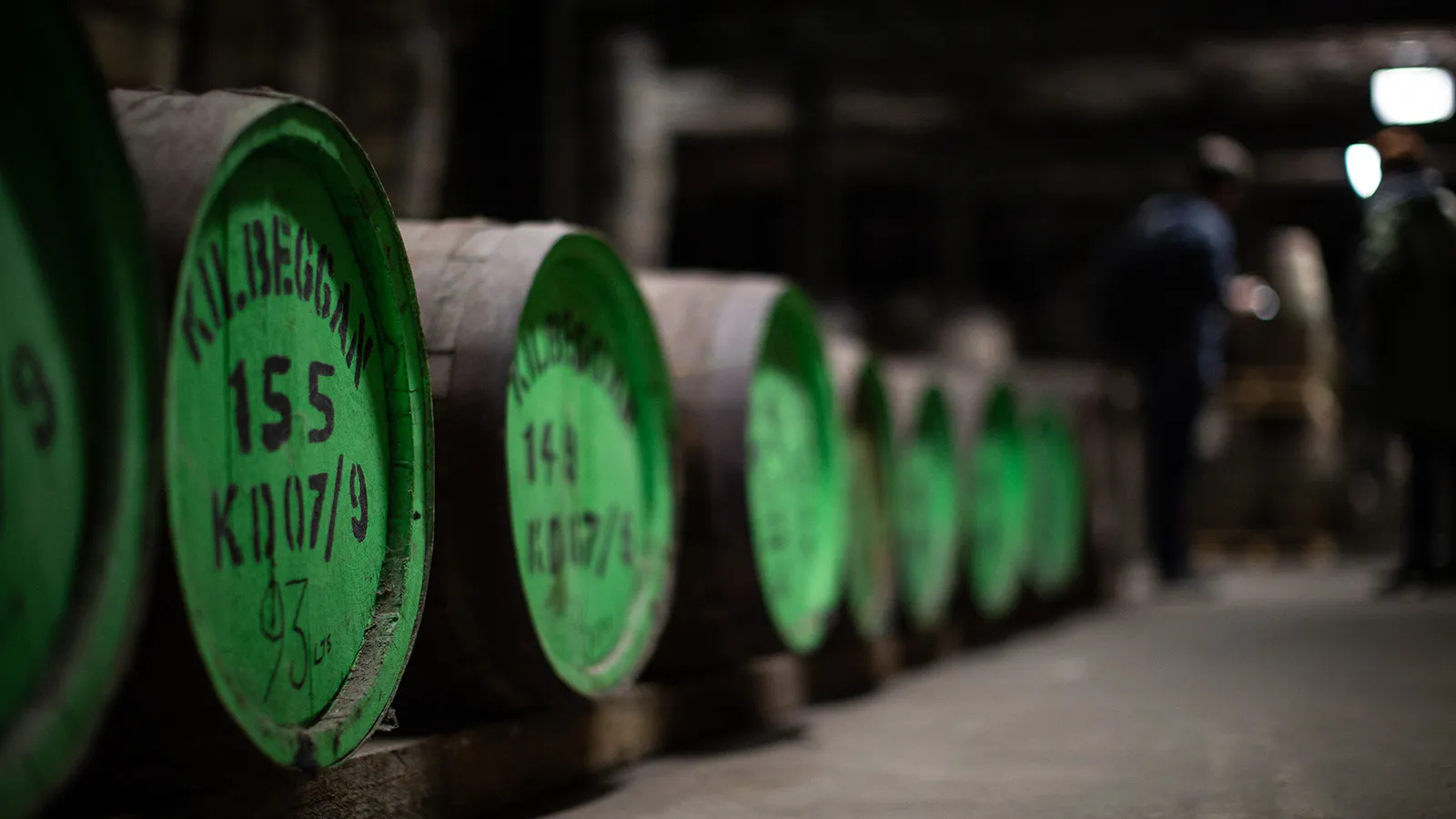


Kilbeggan encourages responsible drinking. Alcohol should be consumed in moderation. By entering this website,you are agreeing to our Terms and Conditions, Privacy Policy and Cookie Policy
You must be legal drinking age to enter this site.
OUR HERITAGE

Kilbeggan Distillery

When the doors of the Kilbeggan Distillery were shut in 1953, the people of Kilbeggan could’ve easily accepted defeat. They could’ve acknowledged that times had changed, and that fate had dealt them more than their share of bad breaks.
They would do no such thing. The distillery meant too much to too many in the town.
They would never let its smokestack be reduced to a monument, no matter what the world threw at them.

















1405
First known documentation of Irish whiskey. ‘Uisce Beatha’ or ‘water of life’ is recorded in the Annals of Clonmacnoise.
1757
Matthias McManus establishes Kilbeggan’s first distillery under the patronage of Gustavus Lambert. Early documentation shows McManus’ still had a capacity of 232 gallons and likely produced around 1,500 gallons per annum
1779
The Distilling Act requires all makers of Irish whiskey to operate with a government-authorized license. Many distillers go underground, as illicit operations spring up throughout central Ireland
1830
The Temperance Movement is founded in County Cork, several hours south of Kilbeggan, by Franciscan priest, Father Theobald Mathew, known also as the “Apostle of Temperance.” As much of Ireland’s population pledges to abstain from alcohol for life, the impact on distilleries is devastating. The movement is officially known as the “Cork Total Abstinence Society” and enrolls half of Irish society at the height of its influence.
1878
Fire destroys part of the distillery. Townspeople smash down warehouse doors allowing several thousand casks to roll into the street, thereby preventing destruction of both facility and supply
1917
Owing to food shortages throughout Great Britain, the distilling of whiskey in Ireland is suspended.
1919
In October, the United States Congress passes the Volstead Act, which marks the beginning of America’s Prohibition Movement. Wayne Wheeler of the Anti-Saloon League drafts the bill, outlawing the production, sale and transport of intoxication liquors. In short order, Kilbeggan Distillery’s key export market is closed.
1924
Amid a perfect storm of external interference, Kilbeggan Distilling Co. ceases distillation and begins to sell off the stock of whiskey left aging in its warehouse. Most workers are dismissed; the future of the distillery is bleak.
1931
Whiskey production at Kilbeggan Distilling Co. resumes after the end of America’s Prohibition Movement.
1953
Excise tax increase leads Kilbeggan Distillery’s stills to shut down – this time seemingly for good.
1963
German buyer, Karl Heinz Mellor, purchases the distillery and makes a small fortune selling off the remaining whiskey and a rare left-hand drive Mercedes-Benz® automobile. He turns the distillery into a pigsty, uses thousands of unused bottles to form concrete floors. A grim moment for Kilbeggan, much reviled by locals.
1982
The Kilbeggan Preservation and Development Association is formed by townspeople. The organization acquires a caretaker’s lease, and begins fundraising for future renovations by selling lifetime memberships.
1983
With the help of the Keoghan brothers and timber donated from local mills, the restoration of the waterwheel is completed, and it turns for the first time in nearly thirty years.
2007
Distilling recommences at Kilbeggan Distilling Co. using traditional methods and antique copper stills.
2010
Addition of mashing and fermenting equipment to the distillery allows the complete distilling processes, from grain to cask, to occur under one roof for select Kilbeggan Distilling Company whiskeys.
2017
Kilbeggan® Single Grain is introduced to the world and provides a welcome addition to the family of Kilbeggan Distilling Company whiskeys.
A WORD WITH KITTY FLYNN, THE TOWN HISTORIAN
When we started, there was no money. If we wanted to get something done, we had to do it ourselves. We got the key and walked in one Saturday morning in 1983. Every place was covered in rubble and falling timbers. Totally derelict. All the roofs had fallen in, all the windows were blown out. It was a huge, sprawling complex of dilapidated buildings and we had absolutely nothing. Everybody brought their own tools. Chisels and hammers and saws, that kind of stuff. All I brought was a sweeping brush.
There was something very appealing about the waterwheel. The sound of the water on it. The sight of it. It affected everybody really deeply. They realized that there was something more to the restoration of the distillery.


More To Explore




